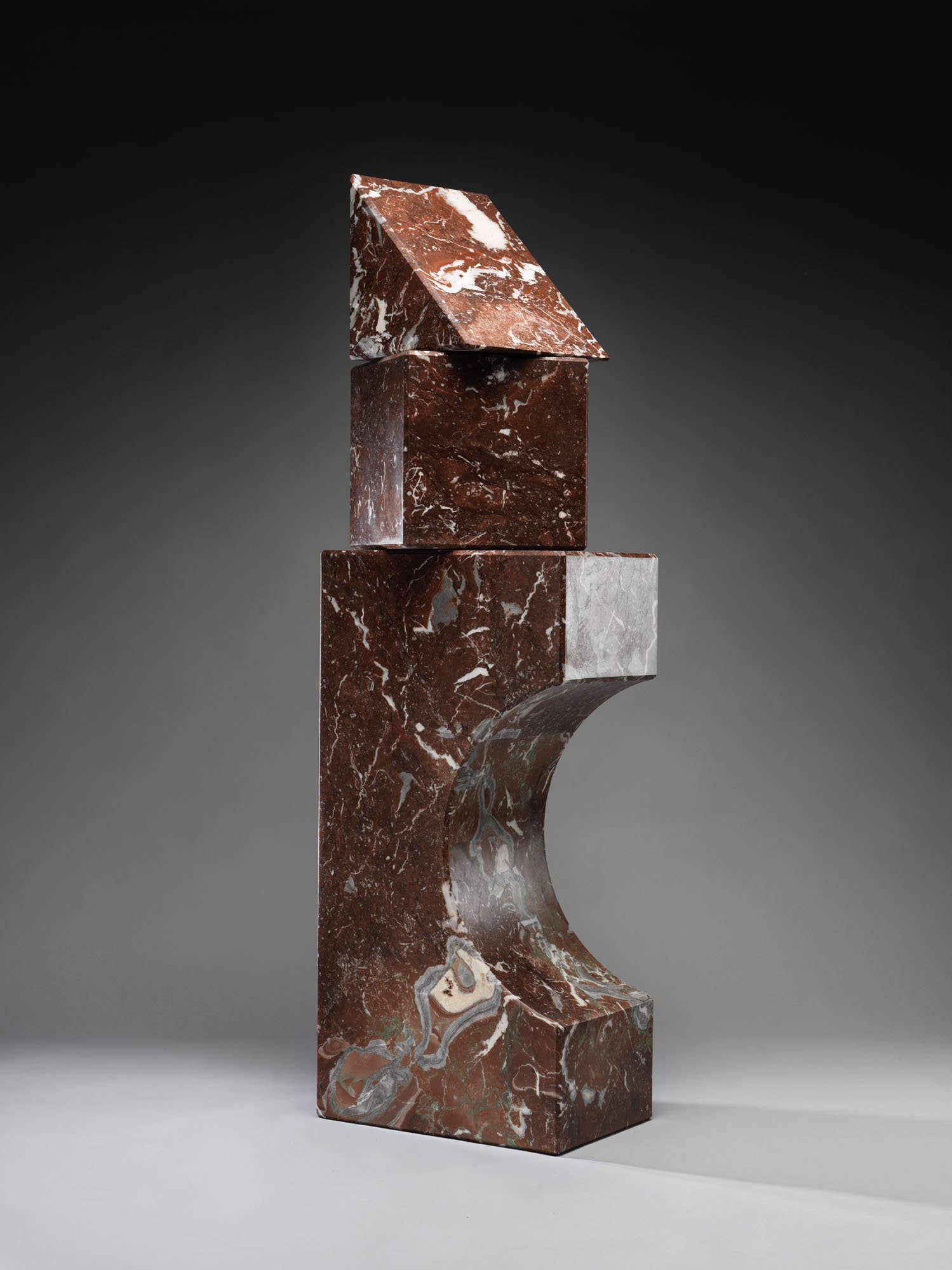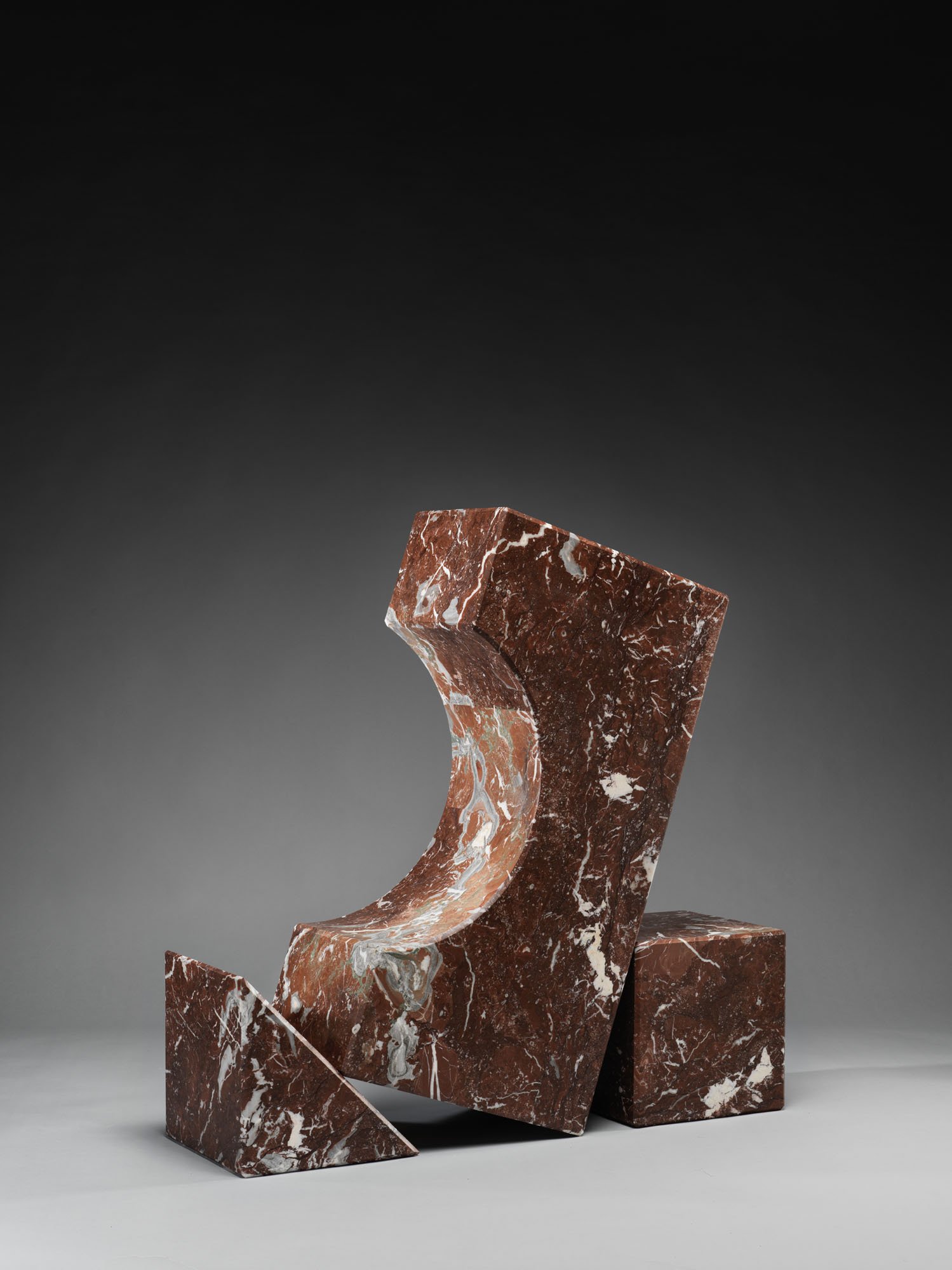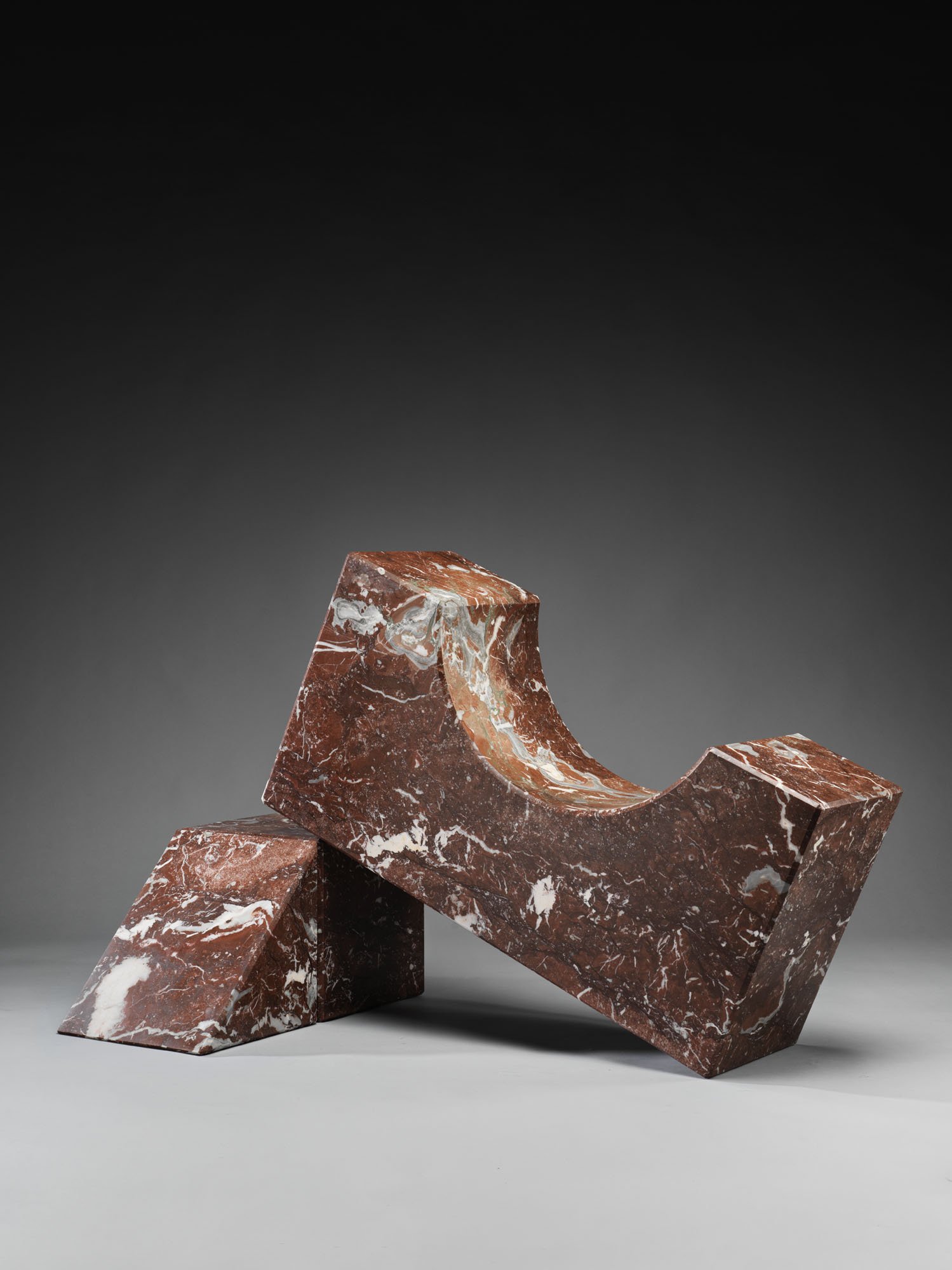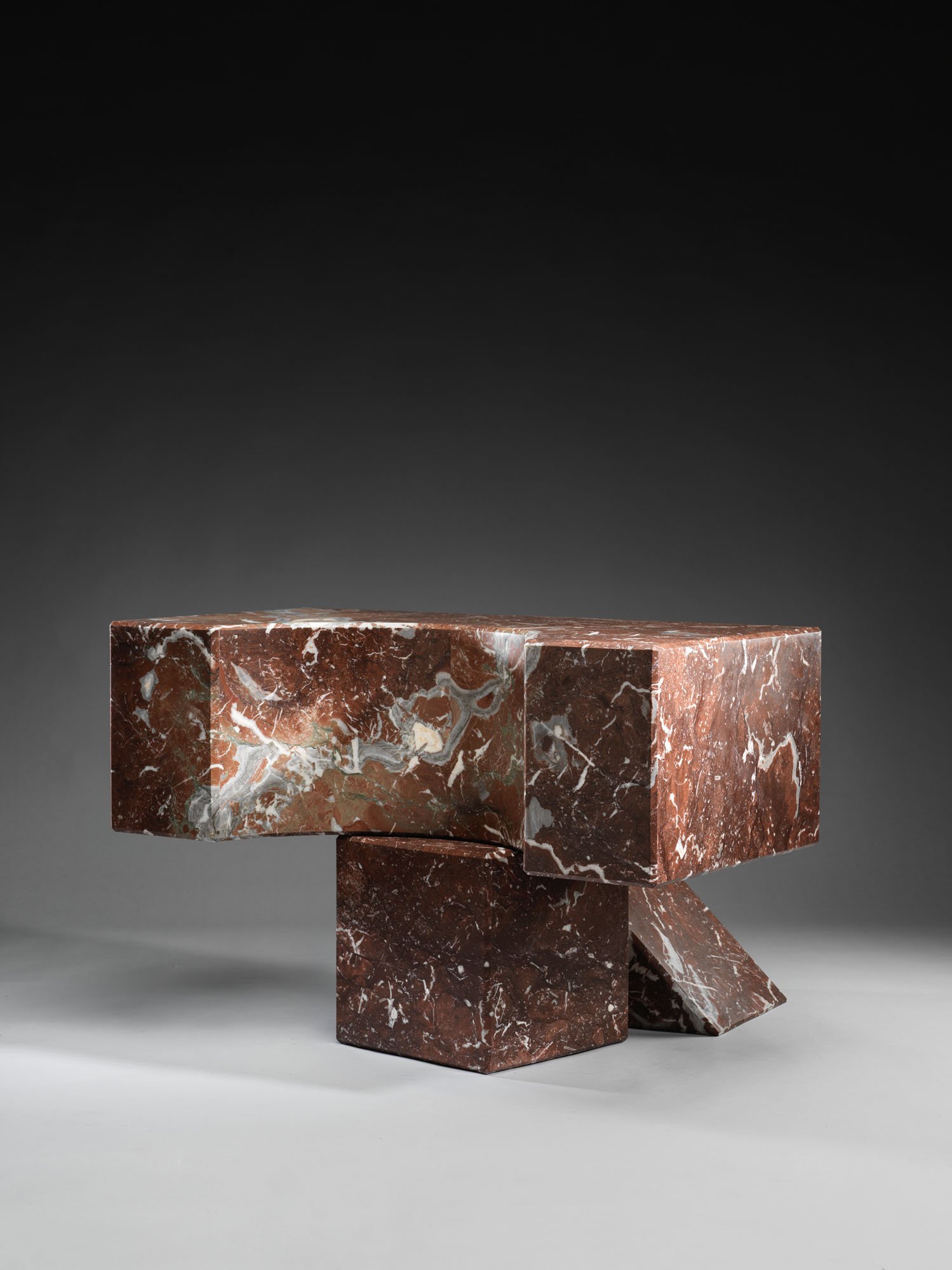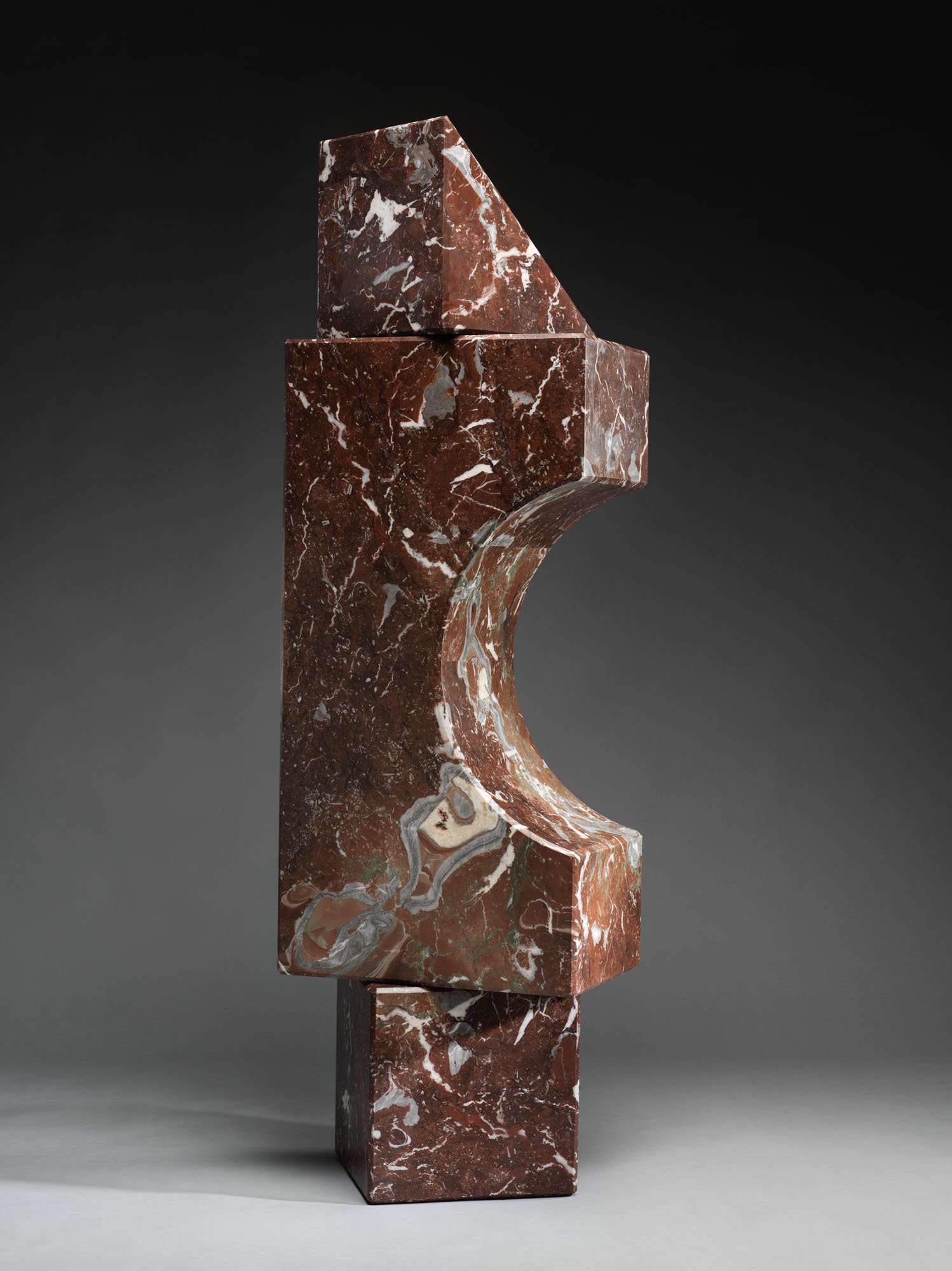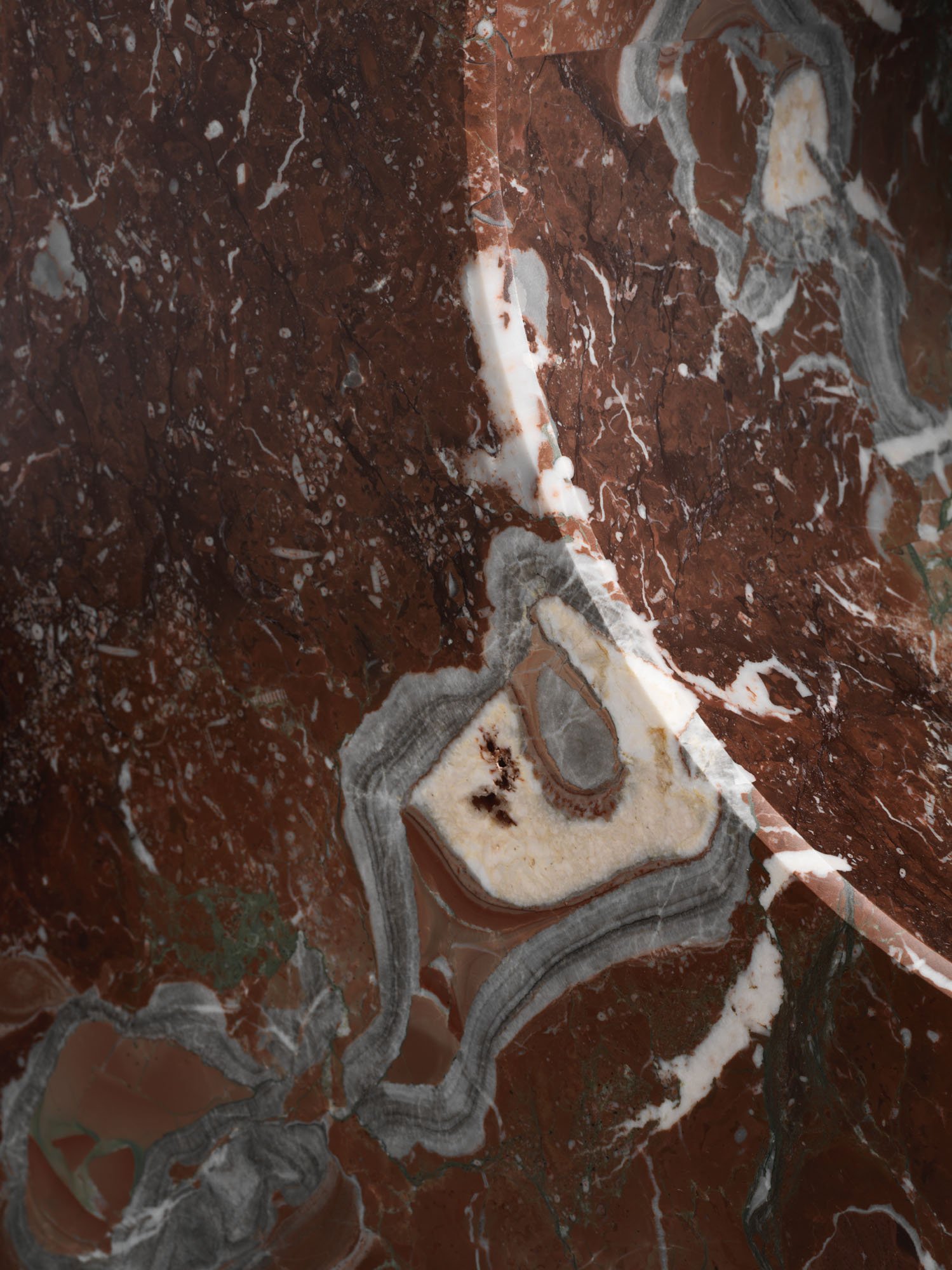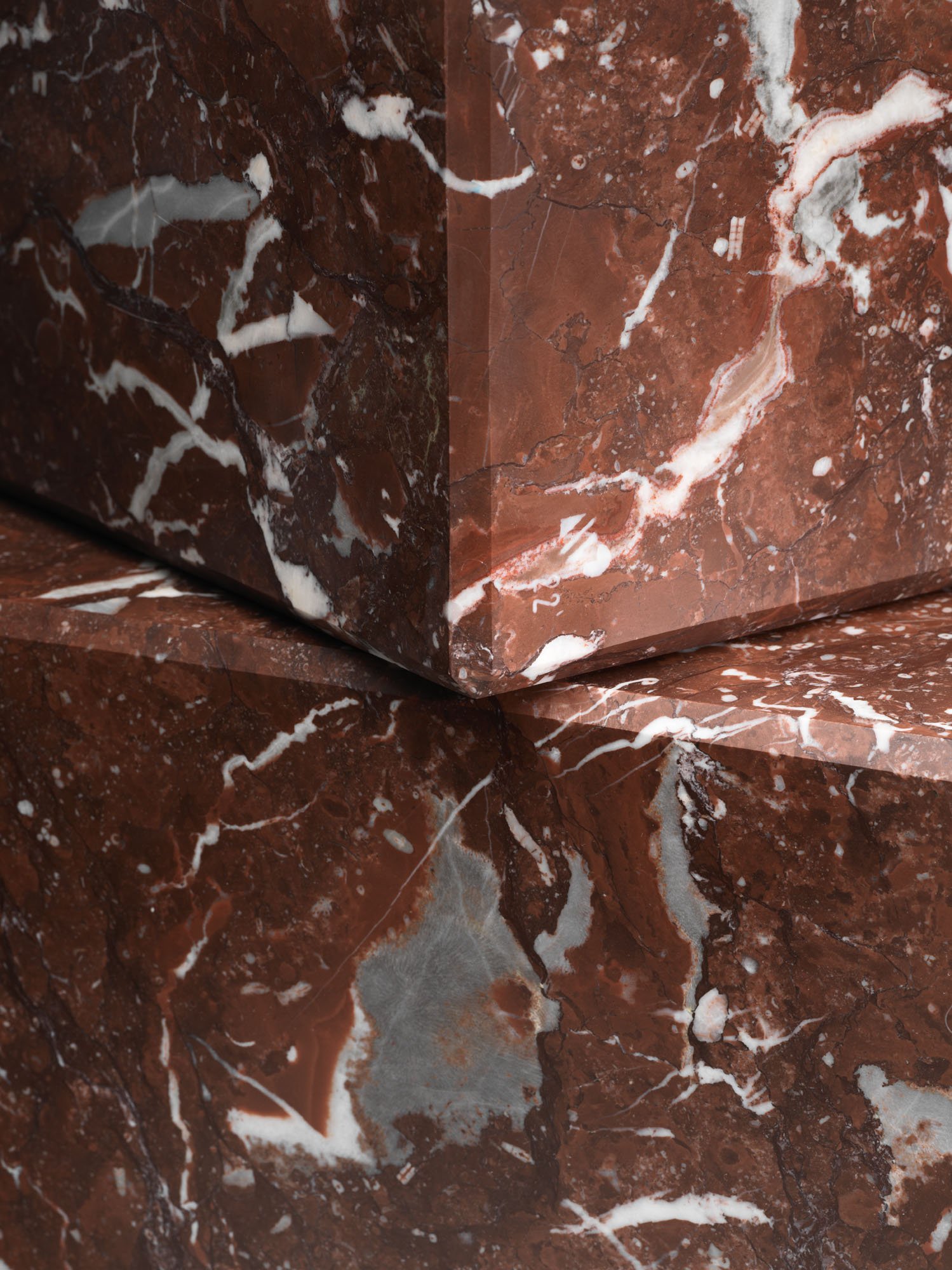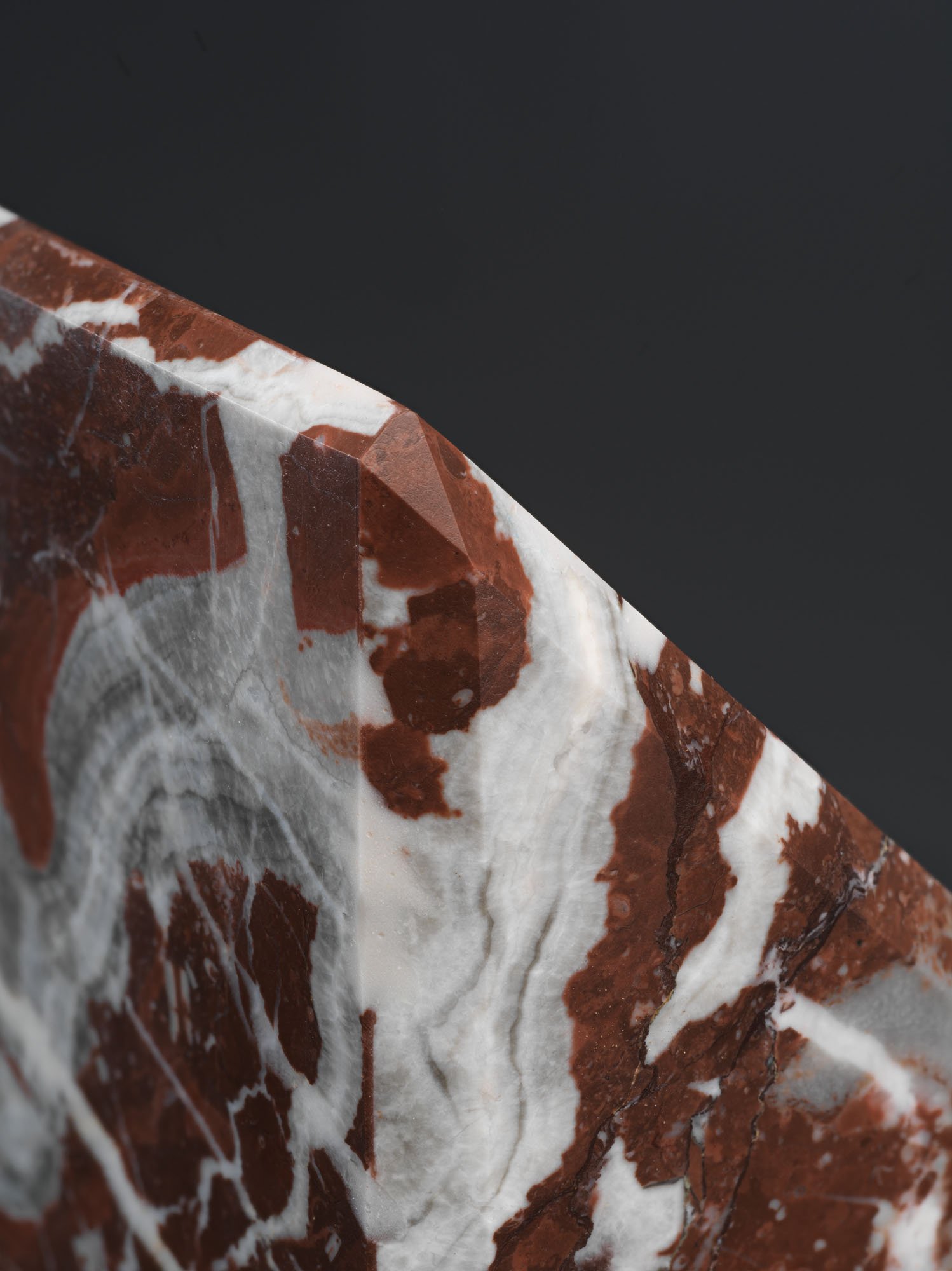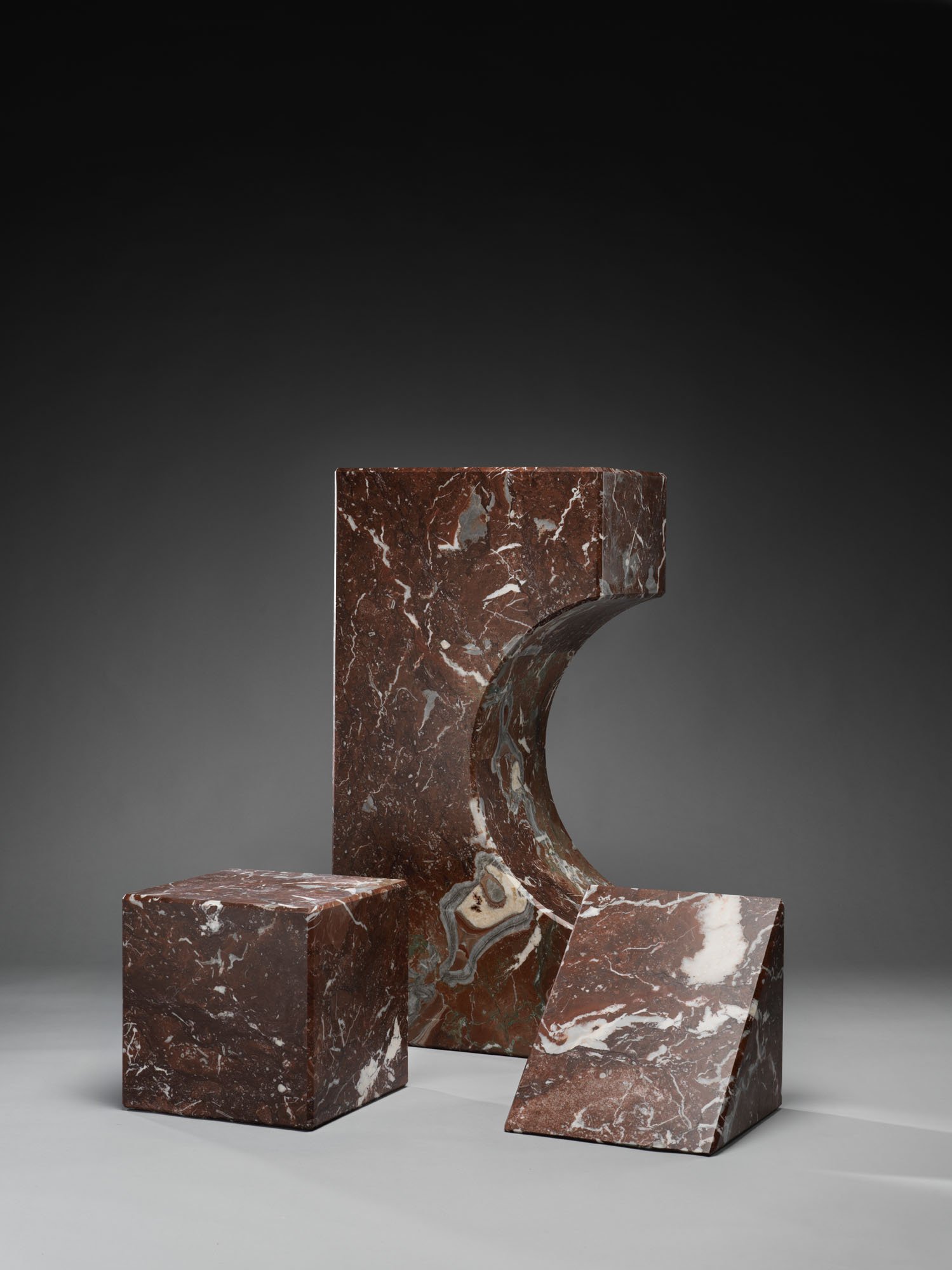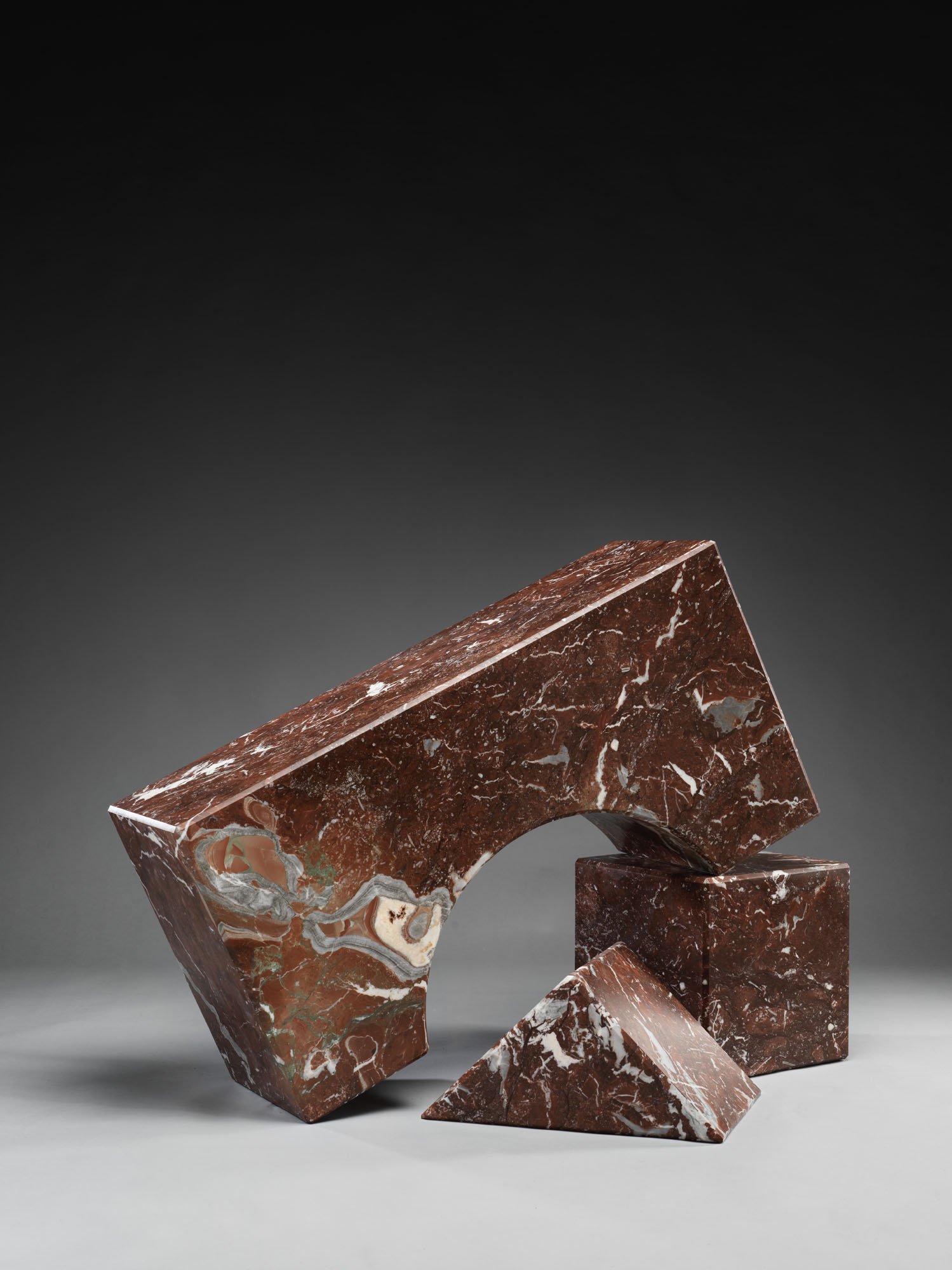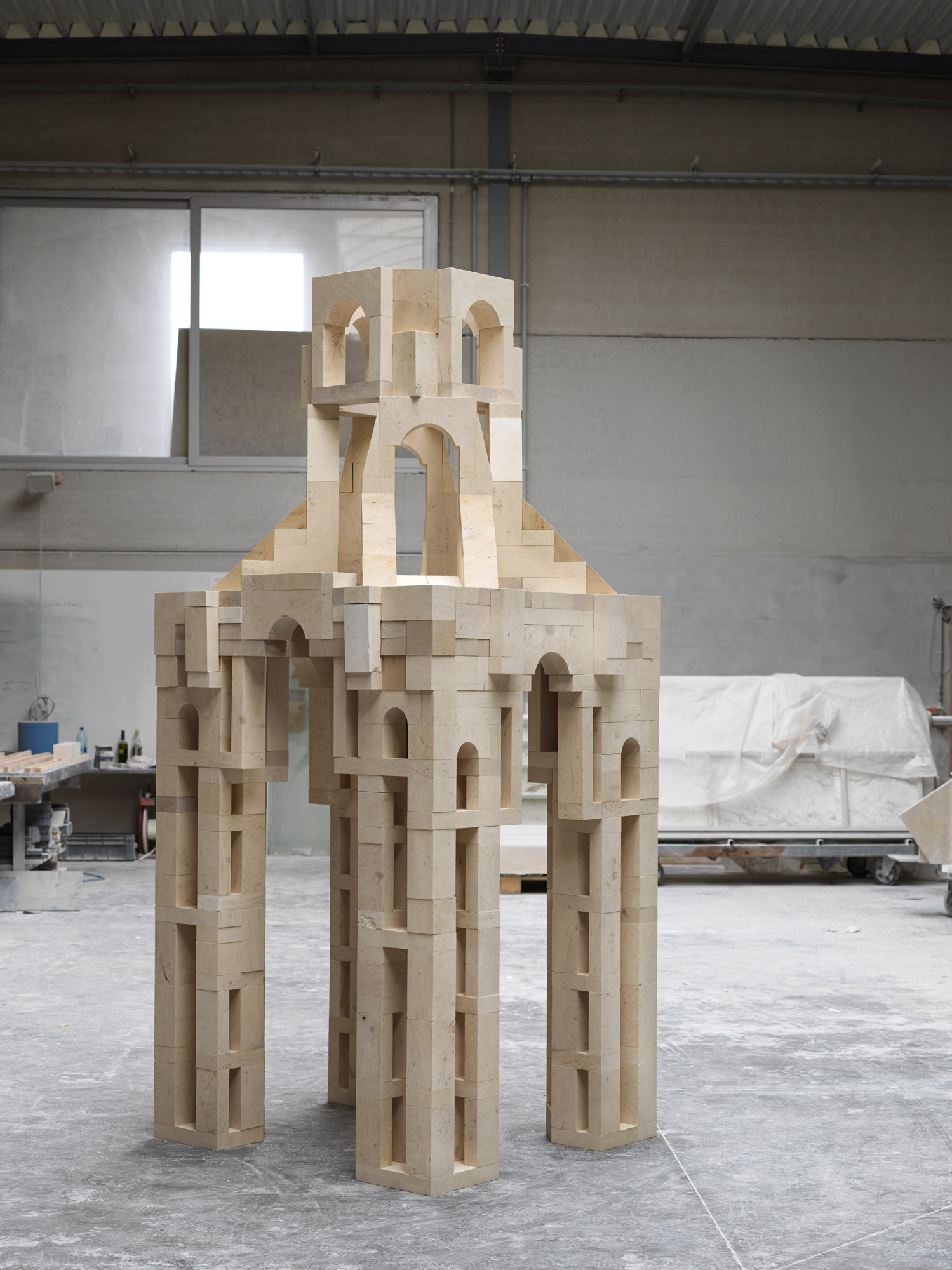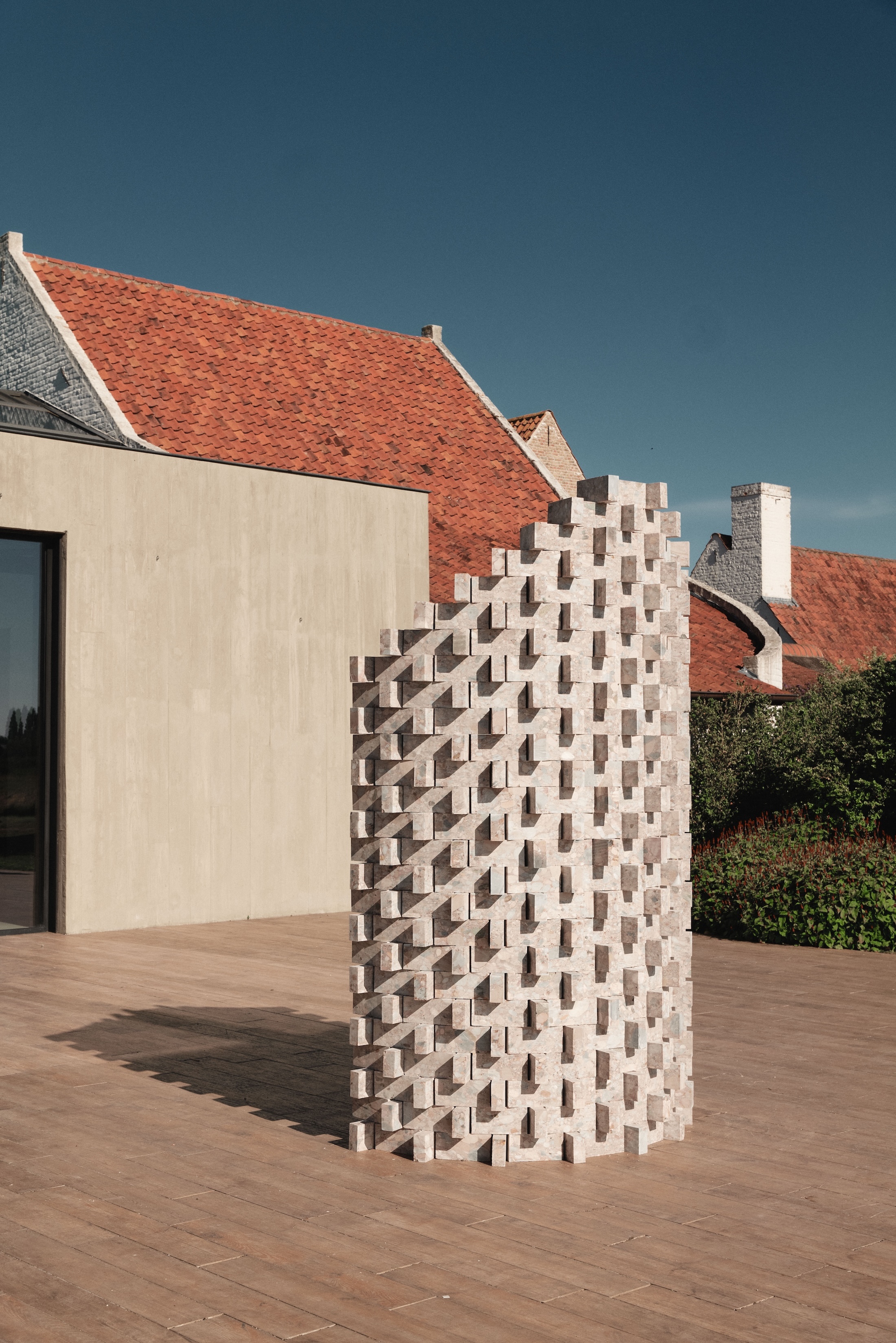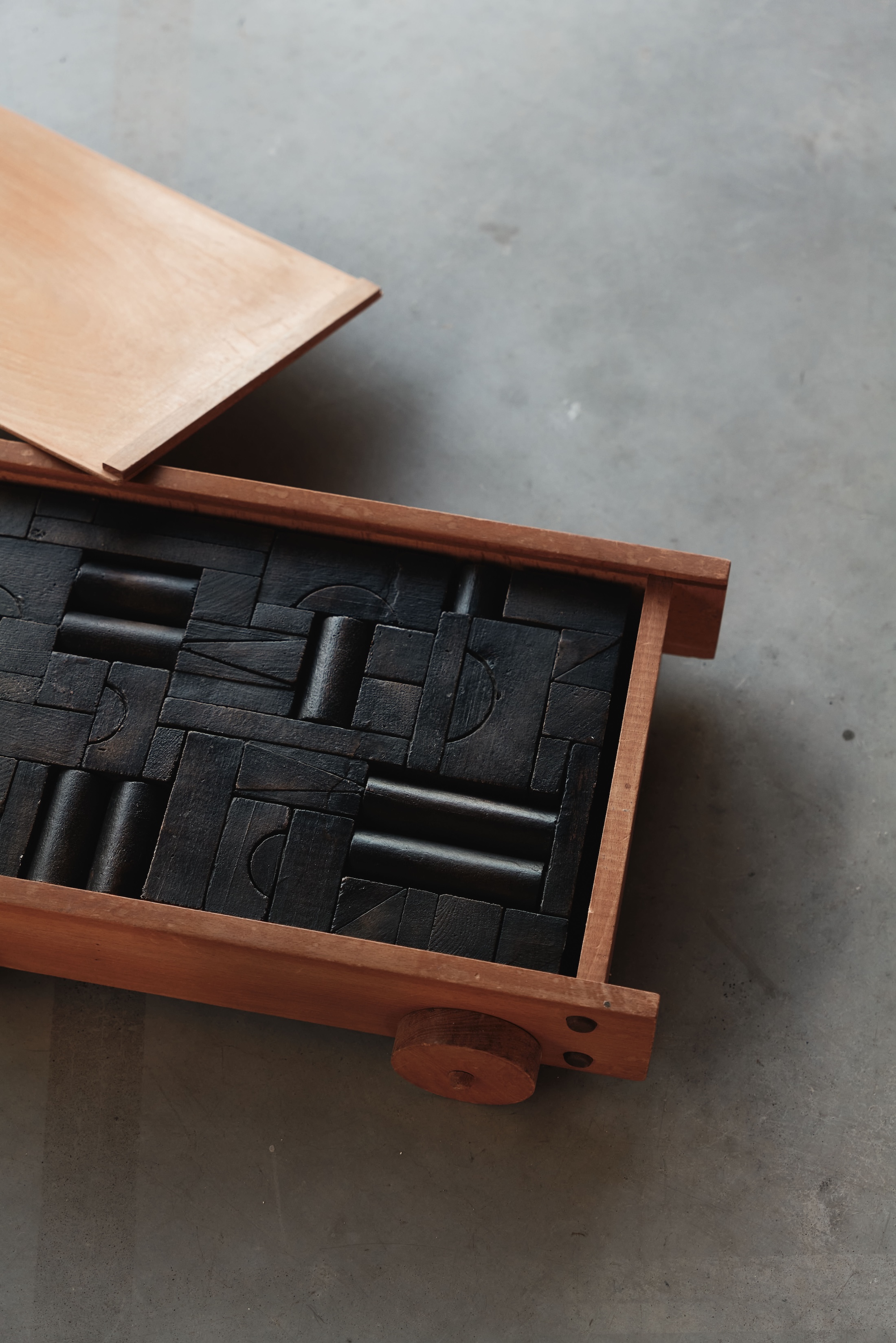I.XI.XIV
3 Rouge Griotte building blocks
The work consists of 3 Belgian Rouge Griotte marble blocks. This is a smaller version of the
eponymous sculpture made in 2020.
The blocks have been made with glued sheets of marble made to appear massive. The
elements are based on wooden toy blocks. These are built into a temporary structure that can
be altered each time it is shown.
The blocks are not affixed in any way, but placed on top of each other in a specific building
order.
Currently shown at:
Timeless Remnants
PRACTICAL INFORMATION
July 19 – August 17, 2025
CWART, Kalfstraat 42, 8300 Knokke-Heist
Opening Hours Thursday to Sunday, 2:30 – 6:30PM
Or by appointment
How do we relate to what remains — to the forms, gestures, and memories that survive the erosion of time?
Cwart and Grège Gallery present Timeless Remnants, a group exhibition set within the former stables of a 14th-century farmhouse in Knokke. Now transformed into a large, continuous exhibition space, the venue retains its original character — visible wooden beams, old brick walls, and concrete surfaces shaped by the building’s past. This layered architecture becomes the stage for a quiet yet powerful conversation on permanence and transformation.
Bringing together four contemporary artists — Chidy Wayne, Conrad Willems, Laura Pasquino and Jana Cordenier — Timeless Remnants explores how remnants of the past continue to shape our visual and emotional landscapes. Rather than looking back with nostalgia, the exhibition invites us to encounter memory as something active — as matter in motion.
The works presented move between sculpture, painting, textile and performance. Some evoke archeological rituals, others reinterpret utilitarian forms, or translate natural imprints into abstract language.
Chidy Wayne revisits the human figure as a site of inner conflict, where ancestral memory and personal identity meet. His totemic wrestlers — the Pugnatores — embody internal struggle, transmission, and transformation. Symbols such as the hand recur across his works, acting as mirrors through which the viewer confronts both inheritance and change.
Conrad Willems explores construction as a process of balance and collapse. His monumental modular sculptures, including a structure over 3.5 meters high, reflect on systems that are both ordered and unstable. During the opening, Willems will activate these elements in a live performance that transforms the act of building into a ritual of movement and improvisation. Echoing Chidy’s symbolic wrestlers, the performance engages the body as both tool and subject — caught between structure and chaos, intention and instinct.
Laura Pasquino’s elongated sculptural forms draw on the presence of farming women and the tools that shaped their daily gestures. She transforms these references into abstract objects that carry both memory and care, re-inscribing the rural within a contemporary sculptural vocabulary.
Jana Cordenier’s paintings enter into direct conversation with nature — installed in a semi-circular, glass-lined room where the surrounding landscape imprints itself into the work. Her process incorporates light, texture, and time, turning each piece into a sensitive record of disappearance and presence.
Each artist approaches the idea of “remnants” not as static fragments, but as fertile ground — material to be reimagined, reassembled, and made new. As distinct voices converge, a shared sensitivity emerges: one that recognises in every trace a potential for renewal.
In this space where history is still visible — in the grain of a beam, the line of a brick — Timeless Remnants opens up a dialogue between past and present, permanence and impermanence, material and gesture.
As the historian Pierre Nora once wrote, "Memory is a perpetually actual phenomenon, a bond lived in the eternal present." Here, that bond takes form — tactile, mutable, open to interpretation — allowing each visitor to find their own way through time, through matter, through art.
Related art works


